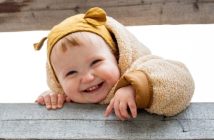
Whether you are familiar with taking ski lifts in other countries or not, there are a few things worth remembering when doing so in China.
Magic Carpet
This is the conveyer belt found on the beginner slope. In theory it is the safest lift, but often you find that there is a big gap to the side of it where the snow hasn’t been piled up to be flush with the carpet, meaning that there’s a potential hazard of getting things caught in there if you fall over. Make sure there’s nothing dangling that could get caught in the machinery. Ensure your binding-release settings are set to the right number (see previous blog) to ensure that your skis come off to free up your legs in the event that they do get caught. Remind kids when standing on the magic carpet to stand with skis straight and not to move around too much. Always go up before the kids so you can easily ski down to pick them up.
Drag/Poma/Button Lift
After conquering the magic carpet slope (in full control) it’s time to tackle the drag lifts, as these usually access the easy, less steep areas. These are the ones with lots of individual bars with black disks at the base, which drag skiers up while their skis remain on the ground. Always explain thoroughly how to take a lift before sending a child up on one. Take a qualified instructor with you to the resort to really ensure that all safety aspects are covered.
Skiers should hold their poles in one hand to the side while standing next to the lift assistant with skis shoulder-width apart and facing straight in the direction of travel. Often, people will stand with skis off-angle or in a V shape when waiting for the lift, meaning that when it first starts to drag them their skis catch in the snow and they will simply be pulled over. If not quite ready when one drag lift comes past, just let it go. When you’re fully ready, reach out behind you with the free hand, grab the bar, and as it comes past you, pull it down to place it between your legs and let it pull you gently uphill. It’s important not to see the drag lift as a seat. Many people will try to sit down on it, which will inevitably lead to falling, so to avoid this, remind your kids to stand up straight the whole time.
Always go up first before less experienced skiers, so you can ski down to help anyone who falls off. Anyone taking the drag lift should know that if they come off they should immediately shuffle themselves away from the path of the other oncoming lift users as soon as possible, and wait to the side of the lift track for assistance.
When reaching the top, pull the bar down, push it away from between your legs and ski away from the lift as quick as possible. The bars are spring-loaded, so one potential hazard comes from releasing these bars when someone is standing in front of you. Always check no-one is directly in front of you before releasing the bar, and never ever stand in the way of an oncoming lift user.
Chairlift
The most relaxing lift when everything goes well, but also the most hazardous. Check nothing is dangling from your clothes, including snowboard boot laces, which could get caught when exiting. If you are wearing a backpack, put in on your front, to avoid it pushing your too far forward on the seat. An adult or an instructor should always accompany first-time users and small kids.
The process of getting onto the lift becomes quite obvious at the time as you can watch others doing so and there is a lift assistant to point you in the right direction. However, take your hands out of the pole straps and hold both poles in one hand, and rest your feet on the footrest after closing the bar, to avoid the skis falling off onto skiers below.
At the top of a lot of chairlifts in Chinese resorts, the usual ‘downramp’ which helps for skiing away quickly does not feature, so getting off the lift can be a real challenge. The important thing here is to keep your skis straight, push away from the lift as hard as you can and use your poles to propel yourself away as fast as possible. The last thing you want is for the chairlift to catch you up after exiting. As always, if in doubt, let kids ride the lift with an experienced adult, and for less experienced adults, a ski instructor will always be able to take care of these risks for you by guiding you in the right direction.
Next week we will focus on some useful skiing techniques on the hill!
In between seasons training and working as a ski and snowboard instructor in Austria, Pete Tupper did a degree in Chinese and German in the UK and came to Beijing in 2010 to run winter camps under the name of O’le Ski. Since then, he has become a well-known face in the family and schools activities scene, creating and hosting the first climbing and skiing championships events for international schools and running all kinds of adventure weekends and trips. He just formed new music classes for kids and adults. Information on the various O’le organizations can be found on www.ole-sports.org and www.ole-music.com or contact him directly at peter@ole-sports.org.
Photo courtesy of O’le Ski



